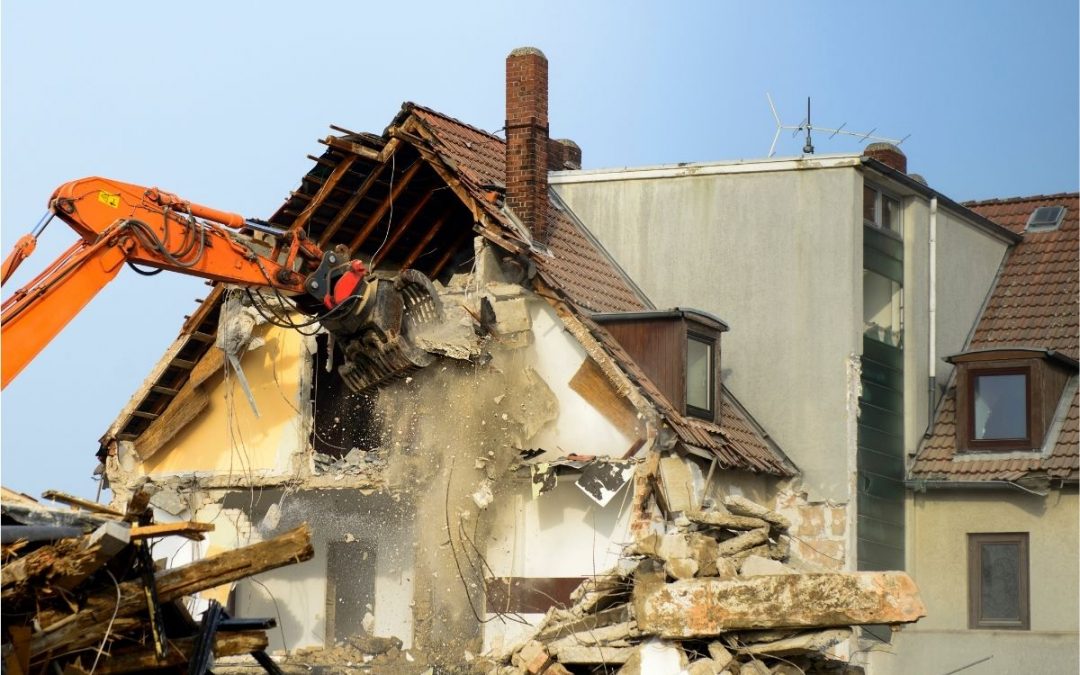Published Nov 30, 2020
The terminology may sound unfamiliar, but to raze a building is simply to demolish it. From the outside looking in, many people view demolition as the basic act of blowing a building up and wreaking havoc on it. While that does have some truth in it, razing a building requires so much more thought than people think.
What essentially does it mean to raze a building?
Razing, or demolition, is the science and engineering of the safe, efficient, and systematic tearing down of a building or structure. Different stakeholders need demolition for various reasons. One reason is that buildings are designed to last for a specific number of years (design life), which, when surpassed, could be unsafe. Another likely reason is to make space for a new structure to be built in the old one’s place.
Whatever the reason, demolition takes meticulous planning and preparation to ensure successful operations. Contrary to popular belief, it’s more than just blowing a building to bits or letting a wrecking ball crush it to the ground. Depending on the building’s design and structure, it could take a reasonable amount of time to plan for its razing.
Planning to raze a building
Due to the complex and unique nature of each demolition job, demolition crews must consider a variety of factors before razing down any building.
Studying the structure
Before any major demolition work is done, contractors will study a building’s structure to come up with the best plan of attack. Each building has its unique construct, and how you will raze it down will depend on this. Key considerations include the building’s makeup, its floor plan, and hazardous materials.
There should be a critical focus on hazardous materials since no real demolition should be done before these are treated and removed. Experienced contractors should have ample knowledge and experience in asbestos abatement, along with the removal of other hazardous and regulated materials.
The material makeup of the building will also influence what demolition procedures and techniques should be used. For example, residential buildings are mostly made of concrete, whereas commercial ones, steel. Each will require a different demolition method.
Study the surrounding environment
As crucial as the building itself is the surrounding environment and its properties, including topography. Contractors will likely study the geographic location, soil conditions, prevailing winds, and climate before deciding on the demolition procedures.
Besides the natural environment, buildings and other artificial structures should be considered to prevent damage and excessive disturbance. Razing a building entails a lot of pollutants, including dust, debris, noise, and vibration. The proper handling and disposal of which is imperative for contractors to comply with state or other local ordinances.

Ways to raze a building
There are multiple ways to demolish both commercial and residential buildings. The two general categories of building demolitions are explosive and non-explosive.
Explosive demolition
Explosive demolition uses strategically placed explosives to target the building’s supports, so the building collapses.
Implosion
Implosion uses sequential demolition of explosives on a building’s critical columns, beams, and supports that keep a structure standing. With successfully executed and well-timed explosions, the building’s key supports are blown up in spectacular fashion, as seen in movies. When the supports go, the rest of the building goes as well. This is due to the weight of the structure, forcing it to collapse on itself.
While this is certainly the most entertaining demolition method out there, it’s not the most practical one in many situations. Practicality aside, this method is also illegal in many places. This is probably due to the fact that implosion carries a ton of inherent risks and hazards that non-explosive methods do not.
Non-explosive demolition
The more practical and universal demolition methods are the non-explosive ones.
High-Reach Demolition
High-reach single-arm demolition makes use of heavy base excavators with dismantling attachments or demolition tools attached to the end. The machines capably take out large chunks of the structure before the ground crew breaks them down further for disposal.
The main advantage of this method is its versatility. The wide array of tools the heavy machinery can use allows for this method to adapt to the demands of different jobs.
Wrecking Ball
Another popular demolition method is by way of a wrecking ball. Like implosion, wrecking balls are more theatric and quite disruptive. This method is one of the oldest and most common ones out there, typically used for concrete and masonry structures. A giant wrecking ball weighing six tons is suspended with a cable attached to a crane arm. This massive ball is then either dropped or swung at a building to bring a building down with brute force. Jobs that use wrecking balls as their method of choice require highly skilled operators to ensure the demolition’s success. However, this method has many setbacks, including excessive noise, vibration, dust, and debris.
Selective Demolition
Selective demolition is the systematic approach in demolishing or razing a building that promises the least amount of disturbance among the other methods. Completely razing a building down is not always the most cost-effective or practical solution to your situation, and that’s where selective demolition comes in handy. This method protects the majority of your existing building’s structural integrity while minimizing the impact on ongoing operations.
Another common term for this method is interior demolition and is the perfect method for minor renovations, remodels, and alterations on a building.
Interested In Cutting Technologies?
For nearly 40 years Cutting Technologies (CTI) has been the go-to demolition contractor for technically demanding, one-off jobs. Our wealth of experience enables CTI to bring “outside-of-the-block” approaches to achieve the impossible. Contractors trust CTI to get the job done right. Take a look at our demolition services on our website.

About The Author
Terrence Tan Ting is an industrial engineer by profession but a full time writer by passion. He loves to write about a wide range of topics from many different industries thanks to his undying curiosity.

